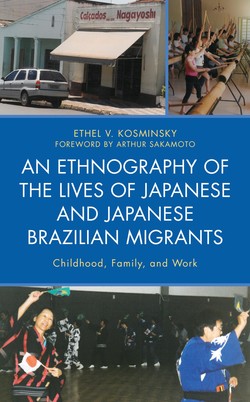Читать книгу An Ethnography of the Lives of Japanese and Japanese Brazilian Migrants - Ethel V. Kosminsky - Страница 13
На сайте Литреса книга снята с продажи.
ОглавлениеChapter 3
Living in Bastos
Japanese immigration to Brazil diminished after 1933 due to the immigration quota established by the Constitution of 1934, which contained an amendment based on the U.S. National Origins Act of 1924. This amendment “fixed an annual quota of two percent of the number of immigrants from each nation who had arrived in the previous fifty years . . . The national government also gained total authority over immigration” (Lesser 1999: 120). As a result, Japanese immigration fell from 23,000 in 1933 to only 3,500 per year until 1942, when it stopped completely following the onset of the Pacific War.
Among those immigrants who arrived in 1933, 180 families settled in Bastos. From 1934 onwards, Bastos started receiving coffee laborers’ families and in 1937 those who came straight from Japan constituted only twenty percent of the Japanese colonists, as eighty percent came from coffee plantations. Therefore, the earlier immigrants assumed a position similar to those who came straight from Japan. They became owners of small agricultural properties and represented a large number of Bastos’ colonists (Mita 1999: 65–66). I will call these colonists indirect immigrants, because they did not arrive in Bastos directly from Japan.
Ms. Yanagisako took part in our first meeting at ACENBA in 2006. As a teacher of Japanese and someone who had just arrived from Japan, she said that the descendants of immigrants who arrived before World War II maintained Japanese culture, including its language from the Meiji Era, when widespread literacy began. In Bastos, she encountered Japan from the Meiji Period, not from a modern country. Monica Emiko Sasai, who worked in Japan with her family for several years, said that some words used in Bastos were no longer spoken in Japan.
Takahashi Akira drove us to Antonio Suzuki’s home. Very sick and eighty-three years old, he still wanted to talk to us. It is quite rare to meet a Japanese person or a second-generation immigrant whom compatriots call by a Portuguese name. Maybe because he owned a drugstore, and his name in Japanese was difficult for Brazilians to say, he remained Antonio Suzuki even to other Japanese Brazilians. He lived by himself in a big house with a very well-kept garden. Next to his house stood another one made of wood that looked very old. Maybe this was his original home.
Before meeting Mrs. Keiko Fukui, my students and I heard an unexpected question from a woman on the street whom I asked for the location of Hotel Fukui. To my surprise the woman said, “Why don’t you stay in a hotel at the entrance to the city? It’s a new hotel.” I considered her question a little unusual, and then I reminded myself that I was in a small city, where everybody probably knows each other. Anyway, through her directions we found the hotel easily. Bastos at that time had two business streets and a few side streets. Houses were mixed with businesses; with the stores at the front and the owners living at the back. Sometimes, a gated passageway led to the house.
